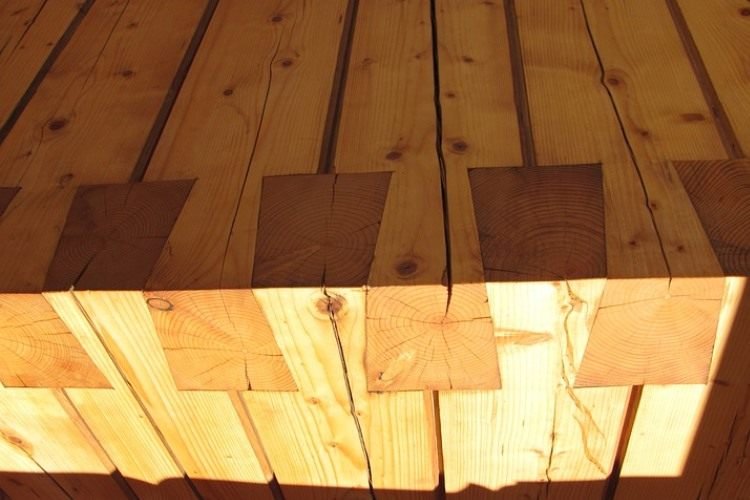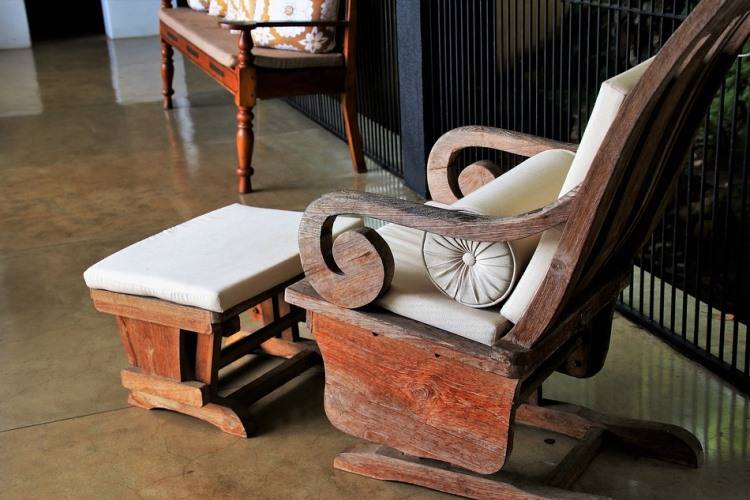Antique furniture is the quintessential fixture for an eco-friendly home interior.
It is a green and sustainable option that contributes to saving forests and circumvents the carbon emissions generated during the making of new furniture.
That’s not all.
These pieces also bring with them history and a rustic vibe missing in present day woodwork.
Who wouldn’t want to sit in a 120-year old chair and pretend they’re in 221B Baker Street, staring into the void as though contemplating an intricate riddle even if their mind is as blank as a blue summer sky?
Mouth watering such thoughts may be but you can’t rush into buying these pieces.
Why?
Because pieces sold as antiques may be crafted from a tree that was but a sapling 20 years ago.
So, if you are looking for antique furniture for an eco-friendly home, your job is to arm yourself with the right knowledge.
Later you might want to check out more tips on creating green home interiors.
But for now, let’s look at some ways on how to know if you have an antique.
A perfectly symmetrical piece is not a good thing
One of the best ways to identify antique furniture is symmetry, or the lack of it.
Inconsistency of make in an antique piece is a great thing.
Keep in mind that these pieces were made during a time when there was no state-of-the-art machinery and furniture was a result of manual craftsmanship.
This means hand planes, saws, chisels, spokeshaves and drawknives will never measure up to machines when it comes to precision.
But therein lies the beauty. : )
So you almost have to look for relative imperfections in an antique. Nicks, cuts, saw marks should make you smile.
If it’s too smooth or too “perfectly pretty” then you can be almost certain that the piece was made by machines and such technology was first used during the mid-19th century.
Look carefully at the hardware
If rungs, slats and rockers are too similar to others used in the furniture, then it’s a sign that the product is newly made. Antique pieces will have “irregularity” in hardware.
Age is another important factor
Worm holes, black marks, and separating boards are all signs that that the furniture has seen enough in its lifetime to be considered an antique.
One of the best ways to find out whether or not the charming dealer in taking you for a holy ride, is to check the drawer’s runner. If it shows clear wear and tear then it’s a sign that it has been opened and closed a lot, which is a good thing.
Also, areas of the furniture that are used most should clearly show. The top of the chair arm, for instance, must be older looking than the underside.
If both sides are clean then you can be certain that the piece has been worked upon recently or the previous owners were ghosts. You don’t want that furniture in your house.
Finally, wood shrinks over time, not in length but in thickness and width. This is visible across the grain pattern. Drawer bottoms that were made of regular wood before the advent of plywood are particularly susceptible.
There’s more…
Let’s look at other factors to consider before you buy an antique.
Check the dovetailing

If you see a neatly cut, unblemished dovetail, be very wary.
Dovetail joints made by hand are usually irregular in shape (unlike the image above) and are different from those made by machines.
Of course, there is always the remote possibility that a carpenter with a genius streak in him crafted the piece. But who’ll brave that chance right?
Another way you can spot a true antique from a reproduction is to check if the furniture uses joints or is glued together.
Antiques will have irregular joints in them. This is especially obvious in drawers which will have a few unevenly shaped dovetails compared to the precise, machine-cut versions of the present day.
Next, turn your attention to those sharp metal things that hold furniture together…
Cruder the nails, the better
Nails with flat round heads first appeared towards the end of the 19th century. So, if you find an “antique” full of them then you have a right to be skeptical.
On the other hand, older nails were cruder at the top and a lot less sharp and more likely to feature in real antiques.
Staples in furniture are a more recent thing and antiques won’t have them.
The finish
Shellac was the unchallenged clear finish used on furniture till about the mid-19th century, after which varnish and lacquer slowly began gaining a foothold.
Before shellac, there was milk paint and wax.
So, before you buy an antique, check the finish once just to be sure.
How do you do this?
It’s quite simple and does not require you to carry your lab to the dealer’s place.
To check for shellac, use denatured alcohol on a small area. If the finish dissolves then you may have an antique in your hands.
Similarly, milk paint can only be removed with ammonia.
Furniture, like wine, develops characteristics that make them more attractive, such as a patina.
Patina
Antique furniture will have developed a certain character to their surface after exposure to different conditions over many years.
The polish, wax, and dust will change with time and give furniture a unique personality.
Some dealers are smart to this and seek to replicate this patina through staining.
What should you do?
Be on your best Poirot impersonation to see past the skulduggery.
True antiques for instance will have unseen parts in them that have not been polished or treated in any way.
For example, the underside of an antique table will likely have raw wood. Craftsmen back then looked to save costs and work on the more visible elements of the furniture.
A cool looking patina is just one of the ways in which new furniture can be made to look a century old.
Young furniture posing as antiques
Yes, they do it.
But, thankfully, these subtle tricks can be spotted.
Besides the abovementioned points, there is one thing – the very soul of the furniture – that is often a giveaway.
Wood.
Back in the day, it was costly to use expensive wood for the entire body. So, people usually compromised and used secondary wood on areas not visible to the eye.
It was common to use different types of woods in the same furniture.
So, check for the secondary wood on the underside, back or interiors of the piece. If they are made of the same wood as the rest, best leave the piece alone.
Also, stay clear of plywood. Standard-sized sheets of plywood were first sanctioned as a construction material in the US in 1928, a year after the first television was invented. So, definitely not antique.
Heavier means older, or is it?
Often it does and weight is also recognized as a sign of quality; for example, a garden bench sculpted from stone.
Does the same hold true for wood?
No, in fact it’s just the opposite. Pure wood weighs less than manufactured wood such as ply.
Restoration vs reproduction
Nothing lasts forever, not even antique furniture. While some are beyond redemption, others can get a new lease of life with a helping hand.
For instance, the wooden framework of an antique sofa may be sturdy, upright and proud but the upholstery may not be as lucky.
In such cases, the upholstery can be replaced. The restored sofa will still be part-antique and hold value.
Reproductions, on the other hand, are furniture made to look like those of the past. Typically, these are sold as “reproductions” by manufacturers who will also offer details on when they made.
Is the antique furniture worth saving?
Antiques are amazing and they do a tremendous job of adding class to a living space.
But not all of them are worth the effort.
If you spot a piece in a store that is off the charts and worth restoring then go for it, even if that may cost you some valuable time and money.
But there is a point where you just have to take a cold decision and say, “Nah, I love you but you’re not worth the trouble.”
What is that point?
One factor that you have to closely monitor is dry rot. Once wood is afflicted with fungi damage it cannot be restored.
Perhaps, if just one or two areas of the wood are affected then you can replace them. It’s a compromise but a decision you’ll have to take.
But if most of the piece has dry rot, move to some other furniture.
Another aspect is the sturdiness of the furniture. Wobbly antiques can be fixed. But those that are broken, especially at the joints, will require custom changes and the cost of fixing that may not be worth the trouble.
If your antique does not have these problems and, most importantly, is structurally all right, then it may not be a bad decision to purchase the piece and make the minor repairs.
Also, it helps to know the different terminologies, styles and construction of antique furniture.
Finally…
After doing a grand old job of depleting the planet’s resources, we also have the power to make the change.
Buying antique furniture is part of that change.
Endangered tree species can be saved by staying off new furniture and their carbon footprint made redundant.
The furniture is also given the chance to live out their life-cycle. Like cast-iron cookware, it’s a win-win deal.
Purchasing antiques is a sustainable, eco-friendly and green action guaranteed to benefit the planet. So unless you have an irrational phobia of old furniture like Billy Bob Thornton, go out and buy your antiques.
Do you own antique furniture? Did you try out any of these tips before buying them? Let us know in the comments.


4 comments
These are great tips, I love antique and furniture and will bear these in mind! Thanks for sharing ?
Thanks Chris!
I do love watching these Antique programmes on TV, it’s amazing what you find and how valuable they actually are. There is so much out there and some items are damaged but others are in good condition.
Yesss, and so much history behind them. 🙂
Comments are closed.